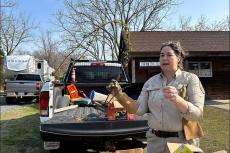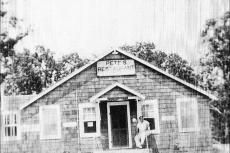The Sag Harbor Village Board met Saturday afternoon to hold a public workshop on the village’s accessory dwelling unit laws, discussing ways the village can make it easier for people to build them on their properties, particularly on those that already have a pre-existing structure.
As the code is written now, accessory dwelling units can be created only on half-acre (or 20,000-square-foot) lots that are at least 70 feet wide. However, many lots in the village are not 20,000 square feet; some are as small as 5,000 square feet, bringing their width down to just 50 feet.
According to Bruce Schiavoni, the Sag Harbor fire marshal, this requirement alone is now stopping six out of eight applications for accessory units that would be created from existing structures.
Ralph Ficorelli and his wife Genna Castellano, both of Sag Harbor, spoke to the board about how a project to convert their garage into an A.D.U. has completely stalled. Mr. Ficorelli is disabled and they have been forced to rent elsewhere because he has trouble navigating the stairs in the house they own. He said they began the building process around two and a half years ago and have gotten nowhere.
“We had retained contractors, we paid deposits, and we lost everything because they’re not going to wait for us for months,” Ms. Castellano said.
Many clients of Anthony Vermandois, an architect in Sag Harbor, have run into this issue when they want to adapt existing nonconfomring structures, such as garages, on their properties.
“In a lot of cases,” Mr. Vermandois told the board Saturday afternoon, “these buildings can be adapted as an A.D.U. without requiring any changes to the building envelope, not expanding them, not needing anything that would require an additional [zoning board of appeals] variance.”
He said that many of the projects would have to go before the historic preservation and architectural review board for aesthetic or safety changes like creating a new point of egress. “The issue is,” he continued later, “you can do potentially a lot of these structures without expanding them, without increasing lot coverage, without triggering pyramid law or anything like that. You could just adapt them as is.”
The board also touched on other ways it would like to make A.D.U.s more attractive to homeowners, including altering the law to allow homeowners to move into the accessory unit and rent the primary house.
“We have a housing crisis, not just in the village but in the state over all,” Mayor Tom Gardella said. “We need to do as much as we can to create housing where it already exists.”
There is concern, however, about the effect of having more accessory dwelling in the village, Trustee Aidan Corish said. “How do you balance the need for work force housing with the needs of the people in the village who may be surrounded by four or five accessory structures,” Mr. Corish said. “What does that do for parking? What does that do for emergency responders?”



